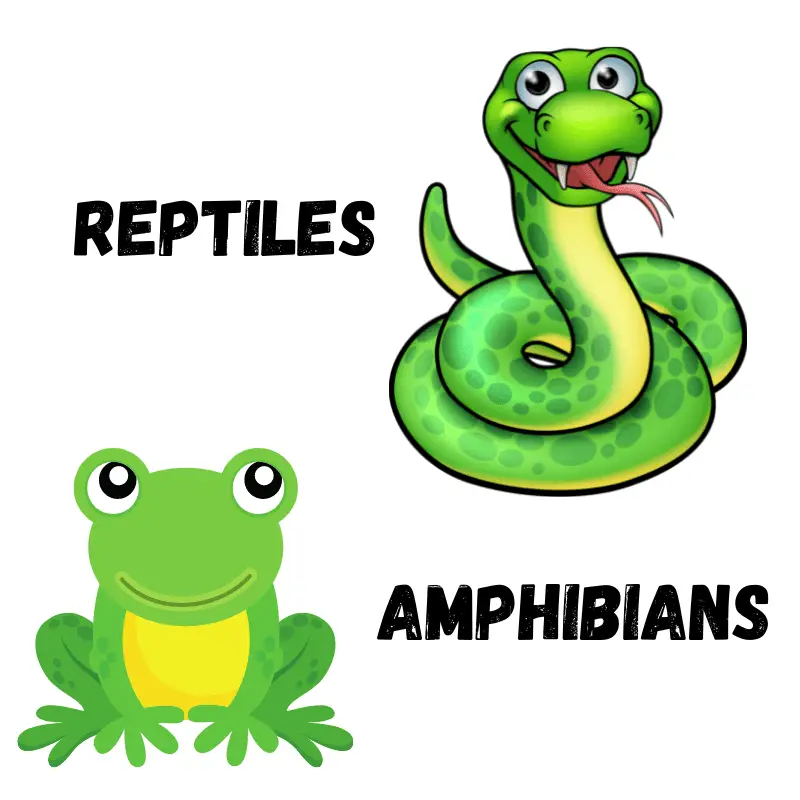Reptiles and amphibians share some of the same characteristics, such as they are both cold-blooded animals and that they both have a backbone. However, there are four vast differences when it comes to reptiles and amphibians.
Reptiles Scientific name: Reptilia
Amphibians Scientific name: Amphibia
Cold-Blooded (Ectothermic)
Cold-Blooded means they rely on external heat sources to regulate their body temperature and can not produce enough of it themselves, so they need the sun or warm environment to survive.
Backbone (Vertebrate)
Vertebrates have backbones and are the animals that move around on land. The vertebral column, or backbone, is one of many parts in its axial skeleton.
Differences
1.Skin
A reptile’s skin is dry and covered in scales, which make their form of protection. In comparison, the skin of amphibians is moist. The moistness is because of the mucous glands of the amphibians.
Mucous Glands
Amphibian skin is rich in mucous glands, secreting substances important for gas exchange and playing a fundamental role in chemical defence against predators.
2.Birth
The birth method of a reptile depends on the species. The majority of reptiles lay dry eggs on land, and these are called oviparous. However, two other birthing methods exist: viviparous that give birth to young live babies without using a shell, and ovoviviparous lay the shelled eggs inside themselves and wait for them to hatch out of the body live.
Three Birthing Methods: ZOOLOGY
- Oviparous – lay eggs on land
- Viviparous – gives birth to live hatchings without a hard shell
- Ovoviviparous – lays shelled eggs inside themselves
On the other hand, an amphibian lay’s their eggs in a membrane gel, underwater, or somewhere very damp. Amphibians never lay their eggs on a dry surface. It must be wet for the ideal hatching place.
3.Life Cycle
When born, reptile hatchlings look just like their parents but smaller and are ready for the world in their hatched form at birth. On the other hand,
Amphibians have a complex life cycle and need to develop through stages, and this process is called metamorphosis. First, amphibians need to adapt to the water, develop lungs, breathe through gills, and then adapt to land and become land-dwelling adults as well.
Metamorphosis
The word metamorphosis comes from ancient Greek and means “a marked alteration.” The transformation process is a biological one in which an animal develops after birth or hatching, and the change it undergoes can be seen as abrupt.
4.Defence
The defence mechanism for a reptile and an amphibian will vary as they are built differently. For example, some reptiles have venom to defend themselves. Even though the primary use of venom was designed to catch food, it also gets used as a defence weapon for some reptiles now, such as the spitting cobra. Reptiles will also use their claws and nails as a defence method.
While the amphibians have chemical defence toxins that are mainly used for defence only, an amphibian will secrete skin toxins whenever there is any form of threat. Amphibians do not have any claws or nails to use as a defence weapon.
Common Reptiles
- Lizards
- Snakes
- Turtles
- Chameleons
- Dinosaurs
- Crocodiles
- Geckos
Common Amphibians
- Frogs
- Toads
- Salamanders
- Newts
- Caecilians
- Blindworm, also called a slowworm

